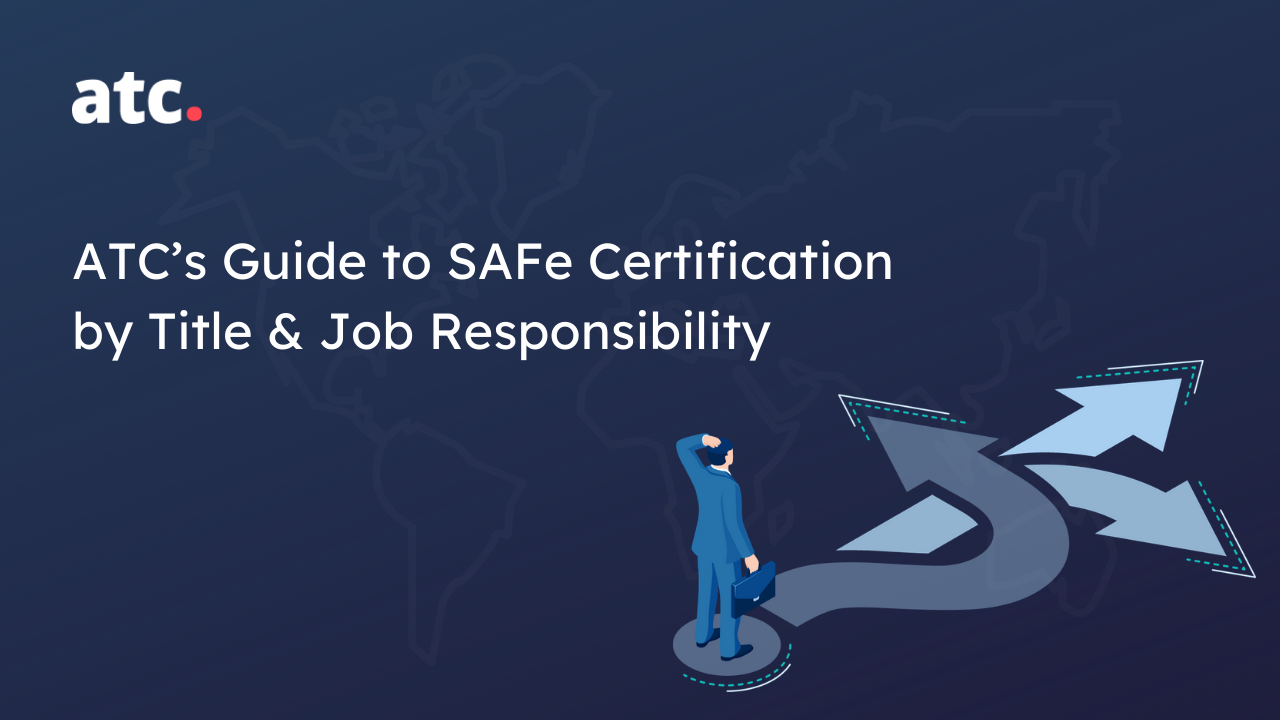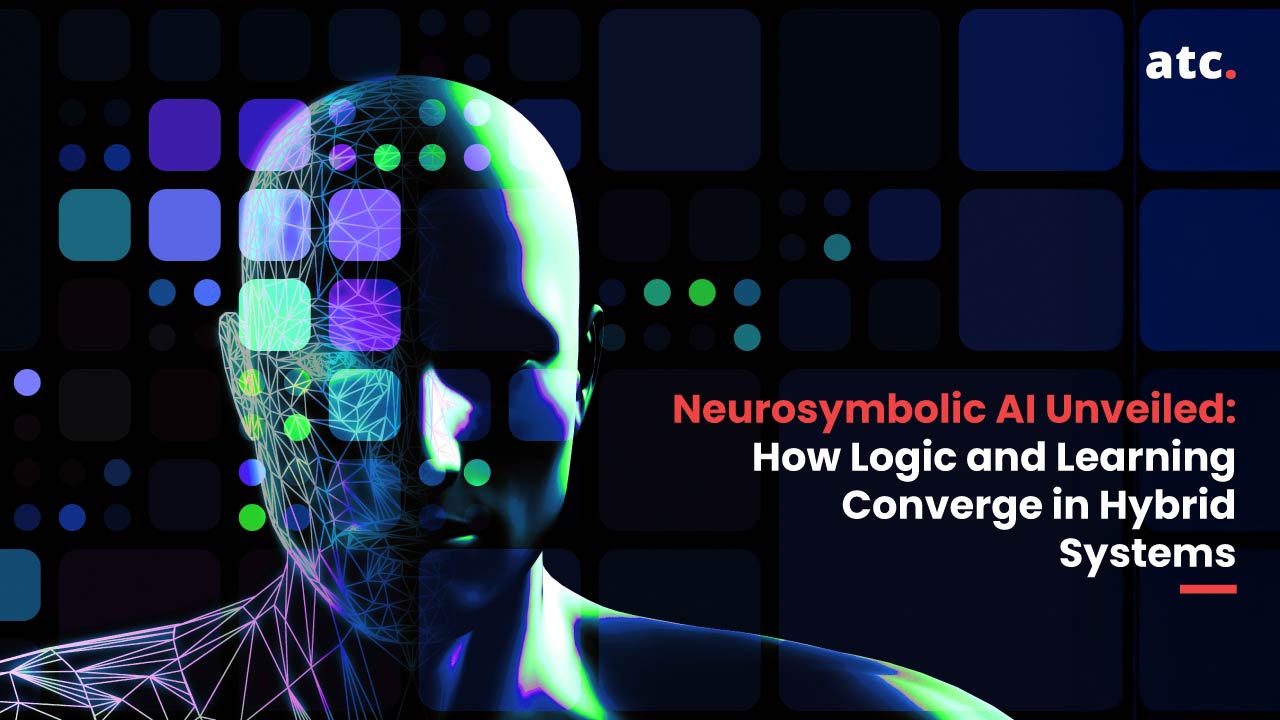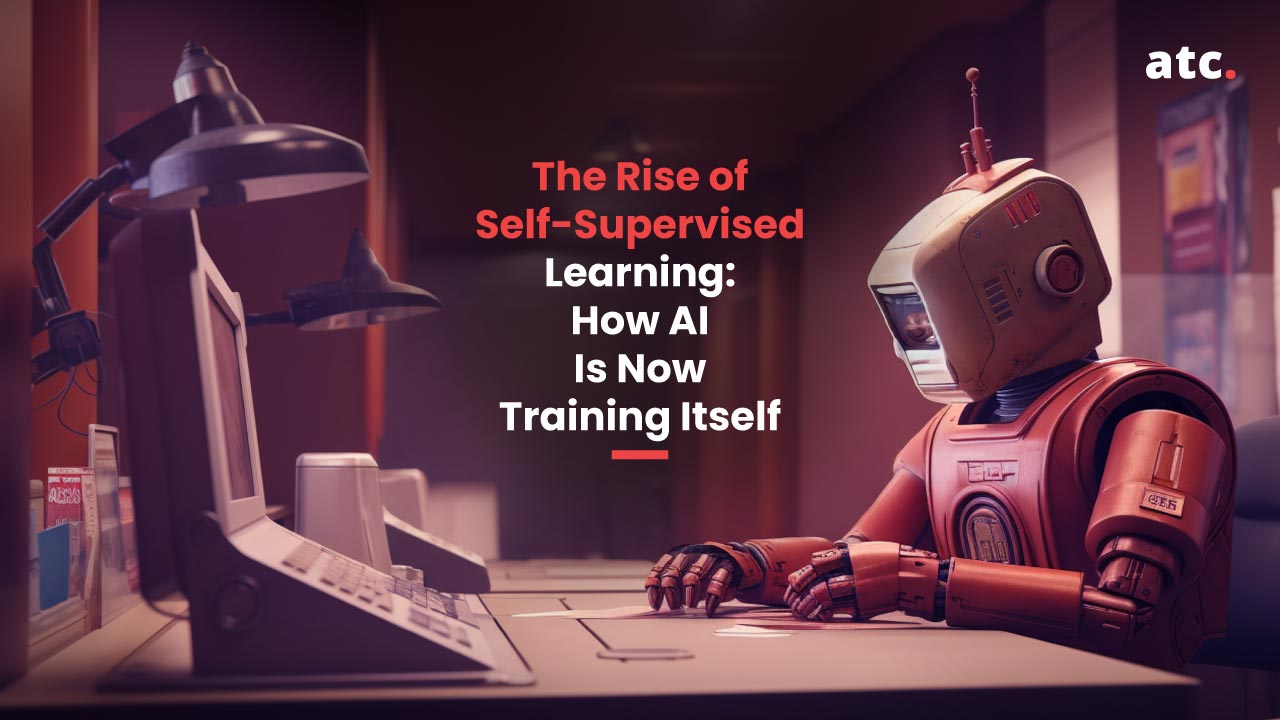Subscribe to the blog
Choosing the Right SAFe Certification
Project team members, future leaders, and potential workers must be ready, eager, and able to keep up with the ever-changing demands of companies to succeed in today's business world. Choosing the right SAFe certification based on your job role is very important to scale your professional career.
For many companies, this means adopting an agile approach — and a Scaled Agile Framework (SAFe) credential. Agile project management is an iterative development approach that emphasizes human communication and feedback, adaptability to change, and the production of useful outcomes.
What are the Four Agile values?
- Individuals and interactions over processes and tools
- Working software over comprehensive documentation
- Customer collaboration over contract negotiation
- Responding to change over following a plan
SAFe is a series of organizational and process patterns designed to help companies become scale agile-led businesses. The SAFe framework encourages large groups of agile teams to align, collaborate, and deliver.
For professionals working within these organizations and building careers in the agile business world, the SAFe credential validates your knowledge and understanding about how to support the successful transformation of organizations into lean-agile enterprises.
It’s a skill that will only continue to be relevant. According to a KPMG survey on agility, organizations continue to scale in an agile fashion. The accounting and consulting giant found that 70% of respondents from businesses around the world were focused on integrating business and IT agile transformations within the next 3 years with SAFe as the predominately used framework.
SAFe: Preferred Delivery Framework for Scaling Agile in Enterprise
SAFe has become one of the preferred development and delivery frameworks for scaling agile in enterprises. But with so many Agile certifications it’s challenging to select the one that promotes your career; benchmarking your agile skills and practices precisely.
Some senior professionals reject agile certification programs, claiming that most certification programs have lax vetting, preparation, and exam criteria. Some believe that qualification only demonstrates a person's book smarts and does not demonstrate their on-the-job skills.
These differing viewpoints often prompt the question, "Is SAFe Certification really worth it?"
Agile frameworks have been around for decades. However, industry leaders believe that instructor-led agile training certificates help improve an organization's overall environment.
Scaled Agile courses inspire the collaborative mindset around agile methods. They instill the team-think approach among development teams and with the end goal being a certification; employees are often more interested in training. And SAFe is one of the few frameworks that combine lean and system thinking efficiently with Agile development practices.
Agile Transformation
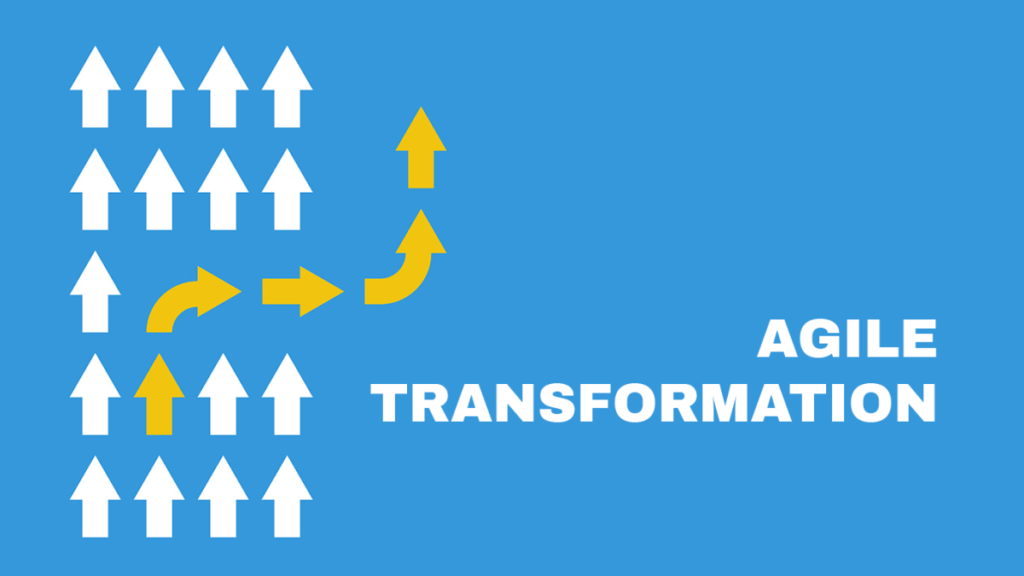
“Being, becoming, or modifying character or state to one of agility” is what agile transformation entails. Of course, this is not a simple task. It necessitates a shift in the mindset of the majority of employees in a company, which is a difficult task.
The advantages of agile are obvious, but the challenge is establishing or promoting agile "behaviour" and deciding when to implement frameworks and practises. It's possible that introducing them too fast could backfire and set you back.
What is Agile Lean Transformation?
Agile Lean transformation is transforming to agility while implementing and recognizing Lean practices and values. The idea of being “Lean”, originally used in the manufacturing sector, was later identified as applicable for software development activities. The goal of Lean? To maximize customer value while minimizing waste.
Lean has seven key principles that apply to software development:
- Waste Elimination
- Amplify Learning
- Late Decision Making
- Fast Delivery
- Team Empowerment
- Built-In Integrity
- View Applications as a Whole
Agile values directly co-relate to developing quality software rapidly. In order to get the most benefits, the software needs to have value to the end user. And identifying and eliminating waste allows time to be spent on more value added activities.
The result is the ability to rapidly release working quality software that a customer is going to value. By using a Lean practice, you are achieving a goal of Agile hence, Agile Lean transformation is the coming together of lean and agile principles and values.
The SAFe Credentials
There are several SAFe certifications available to demonstrate your knowledge and experience. But how do you know which SAFe certification is right for you?
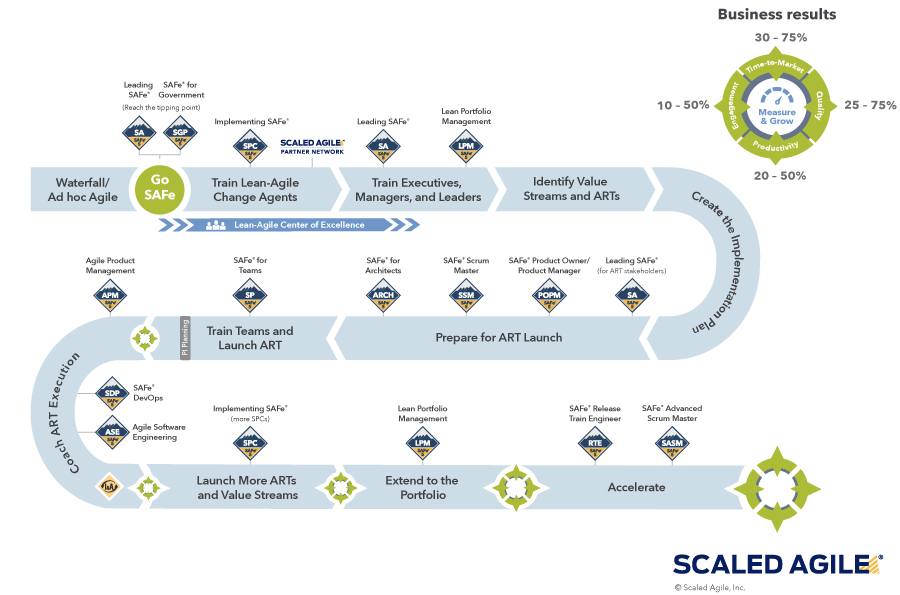
Let’s break each of them down and get a better understanding of who they were each created for and what they entail.
SAFe Agilist (SA)
If you're new to SAFe, you'll want to start with this certification. The two-day course you must take to earn this certification covers all of the Scaled Agile Framework's values and practices. It clarifies what an agile enterprise is, what an agile transition entails, and how to implement a lean-agile mindset.
This certification will ensure the professional is prepared to establish a strategic plan that keeps you leading the competition, understand and execute agile quality management methods, optimize commodity and portfolio performance approaches and engage stakeholders and end-users in the process.
Roles with this credential, include:
- Portfolio, program, or project manager
- Scrum master
- Team lead
- Release train engineer
- Chief information officer
- Agile Coach
- Consultant
- Product manager
- Product owner
- Program manager
- Solutions or systems architect
- Change agent
From there, there are several SAFe credentials you can obtain based on your professional role and expertise. They include:
SAFe Advanced Scrum Master (SASM)
This credential is great for experienced scrum masters looking to take on more responsibilities or seek a step up the career ladder. A SASM is a scrum master responsible for improving team results through the facilitation of cross-team interactions and relentless improvement. These professionals must be able to identify and solve team anti-patterns, improve value flow using Kanban and engineering practices, support program-level execution, and drive improvement.
The SASM credential ensures the holder can establish agile strategies for quality development and expand gradual rates of growth for partners and end-users.
Roles with this credential, include:
- Program or project manager
- Scrum master
- Release train engineer
- Business analyst
- Agile Coach
- Consultant
- Product manager
- Product owner
- Program manager
SAFe Agile Software Engineer (ASE)
ASE professionals apply test-first principles to create alignment between tests and requirements, communicate with agile modeling, create a shared understanding with behavior-driven development, build applications with code and design quality, and apply lean-agile principles to optimize the flow of value. ASE professionals collaborate on intentional architecture and emergent design projects, create agile software engineering plans, and a host of other technical projects.
Roles with this credential, include:
- Scrum master
- Agile coach
- Consultant
- Software Developer
- Software Engineer
- Senior Manager
SAFe Architect
A SAFe Architect delivers agile architecture to enable the creation of business value. Key areas of competency include:
- Applying SAFe principles to develop and maintain Agile Architecture and release on demand
- Leading and supporting solution trains and agile release trains
- Extending the principles driving continuous flow to large systems-of-systems
- Enabling the improved flow of value
Roles with this credential, include:
- Scrum master
- Agile coach
- Consultant
- Architect
- Agile trainer
- Solution architect
- System architect
SAFe DevOps Practitioner (SDP)
The SDP professional is typically responsible for improving the complete flow of value through a continuous delivery pipeline from idea to operational solution. Participants in this course and certification will learn how to apply the principles of DevOps within the lean-agile enterprise. You will also come away with a better understanding of how to set up a continuous delivery pipeline and align yourself with principles of continuous integration and quality delivery. It will also review ways to reduce time to market and increase the value of what you are delivering.
Roles with this credential, include:
- Scrum master
- Team lead
- Release train engineer
- Business analyst
- Agile coach
- SAFe Program Consultant
- Consultant
- Architect
- Engineer
- Developer
- Director
- Quality Manager
SAFe Government Practitioner (SGP)
If you are a government official, leader, or influencer guiding the adoption of SAFe within public sector agencies, this certification might be right for you. The SGP credential holders can use SAFe principles and practices executing and release value through agile release trains to lead a lean-agile transformation of a program inside a government agency. Participating in the course will learn the skills it takes to plan and execute the program increments, set up agile release trains, and create performing agile teams within a highly bureaucratic public entity.
Roles with this credential, include:
- Business analyst
- Agile coach
- Consultant
- SAFe Program Consultant
- Practice Lead
SAFe Lean Portfolio Manager (LPM)
LPM credential holders understand how strategy and investment funding is established, how to apply agile portfolio operations and lean governance, and how to build a plan for implementing the lean portfolio management function.
Roles with this credential, include:
- Portfolio, program, or project manager
- Release train engineer
- Business owner
- Solutions manager
- Agile Coach
- SAFe Program Consultant
- Consultant
- Product manager
- Program manager
- Chief technology officer (CTO)
- Enterprise architect
SAFe Program Consultant (SPC)
SPC credential holders lead all levels of an organization through a lean-agile transformation at scale by training, coaching, facilitating, and mentoring. This servant-leader plays a critical role by applying expert knowledge of SAFe.
Roles with this credential, include:
- Program or project manager
- Scrum master
- Release train engineer
- Business analyst
- Agile coach
- Development manager
- Professional services consultant
- Consultant
- Director
- Manager
- Product owner
- Product manager
- Agile change agent
- Software engineer
SAFe Product Owner/Product Manager
A SAFe Product Owner/Product Manager is a SAFe professional who identifies and prioritizes needs for consumers and production organizations. They can define consumer needs, prioritize work to deliver value to the enterprise, and evaluate skills, functionality, and stories using a lean-agile mindset and SAFe concepts and practices.
The SAFe Product Owner/Product Manager credential is designed to ensure that the certificate holder understands how to create a product vision, refine the product backlog, and assist the company in rapidly achieving agility.
Roles with this credential, include:
- Program or project manager
- Scrum master
- Release train engineer
- Business analyst
- Agile coach
- SAFe Program Consultant
- Development manager
- CTO
- Consultant
- Architect
- Engineer
- Director
- Product manager
- Product owner
- Delivery manager
- Solution train engineer
- Software developer
SAFe Scrum Master (SSM)
In most cases, a trained Scrum Master is in charge of incorporating Scrum activities within an organization. Scrum and Kanban can be used to organize team meetings, help program implementation, and mentor agile teams. This credential guarantees that the holder understands how to mentor and coach teams, encourage and push necessary change, and facilitate scrum practices, including the iteration schedule.
Roles with this credential, include:
- Program or project manager
- Scrum master
- Team lead
- Release train engineer
- Business analyst
- Agile coach
- Portfolio manager
- Consultant
- Architect
- Engineer
- Developer
- Director
- Quality manager
- Product manager
- Product owner
- Delivery manager
SAFe Practitioner (SP)
These individuals are responsible for using Scrum, Kanban, and extreme programming (XP) in a SAFe environment.
Roles with this credential, include:
- Program or project manager
- Scrum master
- Team lead
- Release train engineer
- Business analyst
- Agile coach
- Consultant
- Architect
- Engineer
- Developer
- Director
- Quality manager
- Product manager
- Product owner
- Change agent
- Operations
- Programmer
SAFe Product Manager/Product Owner
A certified SAFe® Product Owner/Product Manager works with customers and development organizations to identify and prioritize requirements.
Roles with this credential, include:
- Program or project manager
- Scrum master
- Release train engineer
- Business analyst
- Agile coach
- SAFe Program Consultant
- DevOps Manager
- CTO
- Consultant
- Architect
- Engineer
- Director
- Product manager
- Product owner
- Solution train engineer
- Software developer
SAFe Release Train Engineer (RTE)
This Scaled Agile Framework course starts by teaching participants about agile software development and then makes the connection between agile software development and SAFe practices.
If you have an RTE credential, it shows you are can drive end-to-end delivery of value in a single program or value stream in a lean-agile enterprise. During this Scaled Agile Framework course, you will learn how to plan and execute a program increment and how to work with value streams within your organization. You will also come away with the skills needed to coach agile release trains and foster continuous improvement within a lean-agile organization.
Roles with this credential, include:
- Program or project manager
- Agile coach
- SAFe Program Consultant
- IT manager
- Consultant
- Director
- Product manager
- Product owner
- Solution train engineer
- SAFe Scrum Master (SSM)
These credential holders are responsible for integrating scrum practices into an organization. The credential testifies to their ability to use scrum and Kanban to facilitate team events, support program execution, and coach agile teams.
Roles with this credential, include:
- Portfolio, program, or project manager
- Scrum master
- Team lead
- Release train engineer
- Business analyst
- Agile coach
- Consultant
- Architect
- Engineer
- Developer
- Director
- Quality manager
- Product manager
- Product owner
- Delivery manager
Obtaining and Maintaining Your SAFe Credential
Once you decide which SAFe credential is right for you, you will need to complete a Scaled Agile Framework course related to that credential and pass an exam. One of the major benefits of these SAFe courses is that they focus on breaking tasks down in a way that makes them easier to handle.
After you pass the exam the first time, you will then need to plan to renew your credential once a year by paying a fee. You will not have to take the exam again, however.
SAFe Certifications for Teams
If you are an agile team looking for ways to improve your skills around agile release trains the SAFe for Teams (SP) course and certification might be right for you. The course and credentials are intended to help team members build the skills needed to become better at performing agile release trains. It reviews how to plan and execute an iteration, and what each team member’s role is in executing a program increment.
How SAFe Credentials Benefit the Organization
Quality: SAFe has built-in quality practices ensuring a fast flow across all levels and teams.
Productivity: When using SAFe, teams are aligned with the product, the continuous collaboration gives them a high level of transparency, they clearly understand the deliverables and in turn set expectations of the stakeholder. The result is a 35% to 75% faster time-to-market and a 20% to 50% increase in productivity.
Team-centric environment: SAFe relies on a team-centric environment that develops via open communication and transparency. This helps to ensure the team has a clear vision of what they want to accomplish and that they are happier and more motivated.
Quality: Organizations that rely on SAFe see better quality across the board, with companies reporting a 25% to 75% reduction in defects.
Complexity: SAFe certification helps to resolve project complexities. The SAFe methodology is used generally for large and complex projects. SAFe makes possible multiple scrum team work together to build a complex product. The SAFe methodology is a very transparent, simple, and straightforward one that works on a set of principles and helps build a large solution. So, to benefit from this methodology and apply it in your projects, you need to have a thorough knowledge of the same. SAFe certification and training will help you know about SAFe in detail
How SAFe Credentials Benefit You
The increased adoption of agile in organizations around the world has opened up the job market — if you have the right skillset. Even so, applicants looking to launch their careers or move up the ladder must beat out the competition. Having the right credential can ensure you make it past the human resources screening process.
A SAFe credential validates your knowledge and understanding about how to support the successful transformation of organizations into a lean-agile enterprise. Obtaining a SAFe credential will help your coworkers, clients, and the teams you work with to instill trust in your expertise and value your guidance.
A secondary benefit is that as a SAFe credential holder, you will receive membership to the SAFe Community Platform and a wealth of resources, including SAFe Communities of Practice that provide networking opportunities with knowledgeable, experienced professionals, including SAFe Fellows and SAFe Program Consultant Trainers, who can offer a unique perspective on some of the most challenging implementation obstacles.
Finally, from a practical standpoint, SAFe credential holders receive a digital badge that can be easily shared and displayed via email signatures, digital resumes, and social networks to gain even greater visibility.
Reasons You Should Consider Getting a SAFe Certification
1) Ability to Handle Agile Adoption Challenges
It is fairly easy to adopt agile in small organizations with one or two teams. The problem arises when you try to replicate the same success at the enterprise level. Why? Agile practices and processes being used in small teams are not best suited to scale at the enterprise level. SAFe training equips you with the required skills and tools to scale agile across the enterprise.
2) Fewer failures in SAFe implementation
In large organizations, there are multiple teams and departments that already use agile internally. But when you combine them, obstacles start to arise. SAFe training skills you enough so that you can implement a uniform agile approach throughout the enterprise. SAFe certifications allow the entire organization to plan, execute and deliver value bringing multiple teams together effectively.
3) Understand the new roles in an agile environment
Scaling agile at the enterprise level will require you to create new roles and change the existing ones. If you do not understand what new roles are to be created or which one needs to be changed and how to change them, challenges will arise.
To avoid these challenges across the entire organization regarding the potential of existing roles, SAFe courses provide you with knowledge of management skills that will help team members to adopt the new agile mindset.
4) Consistency at all levels
Without proper training, implementing agile across your enterprise can be challenging as maintaining consistency across different departments becomes difficult. SAFe certification is all about learning the skills to establish and maintain consistent strategy across the enterprise.
Upon training completion, you will have the knowledge to understand what processes and principles need to be used to align multiple departments along the same strategy.
Is SAFe Certification Really Worth It?
There are more than 300,000 job-related credentials in the world. SAFe certification is recognized and sometimes even required by some of the largest organizations around the world. According to Scaled Agile Academy, 70% of U.S. Fortune 100 companies use SAFe, but it doesn’t just end there. Some of the global companies that are scaling agile across the organization and relying on SAFe to make it possible include Cisco, Lego, PlayStation, FitBit, Royal Philips, FedEx, Chevron, Nordea, American Express, Nokia, Cerno, MetLife, Deutsche Bahn, Telia Finland, Air France, Capital One, Intel and AstraZeneca.
At the same time, selecting the right one for your career goals can help you receive a hike in salary. According to estimates, professionals who hold SAFe Agilist Certification, for example, are paid about 25% more than professionals who do not hold SAFe Agilist Certification.
Taking advantage of these benefits — including the pay hike — will ultimately come down to selecting the right credentials for you and that can boost your career.
Find Out More…and How We Can Help
As a busy, forward-thinking professional, you are committed to lifelong learning and building your professional skill-sets. To assist our clients in that effort, we have several online courses available in the subjects of SAFe, AWS, and many more technical fields. Whether you are a Scrummaster, Program or Product Manager, Agilist, CEO, Founder, Enterprise, System or Solution Architect, you will find a course that meets your needs.
Course participants gain deep insights into mastering business agility to thrive in competitive markets. They learn how to establish a team and technical agility and organize and reorganize around the flow of value. And of course, all class participants actively explore the importance of adopting a customer-centric mindset.
Our SAFe training is conducted by a range of world-leading experts in a number of technical fields. Pricing includes a one-year membership covering project-related support and setup as well as exclusive access to ATC’s SPC community and monthly Q&A sessions with SPCs.
We're committed to learning and adapting to the industry standards and staying ahead of the curve.
Propel your career to the next level and enroll today!
